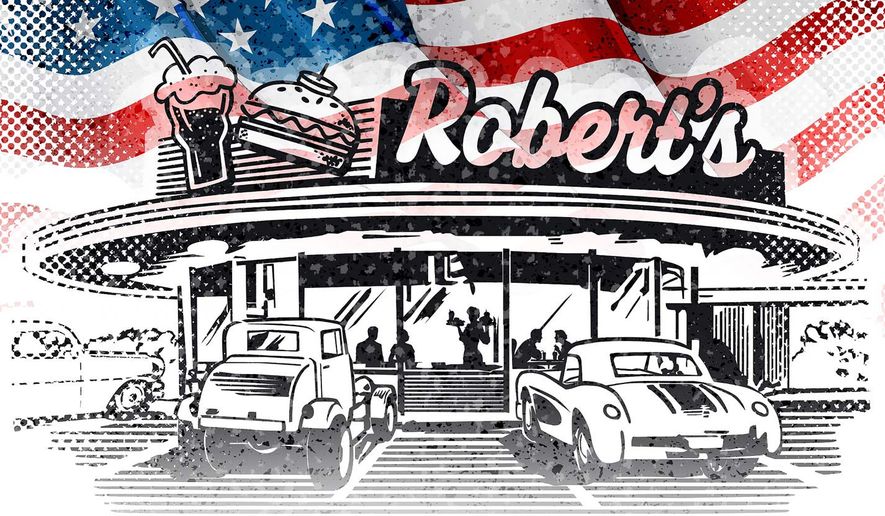OPINION:
In a hot and dry southwest Oklahoma town stands a weathered sign towering above the landscape. Decades ago, it welcomed patrons to a bustling drive-in restaurant. It now sits deserted among the strip of car lots and struggling restaurants. With its clunky, mid-century modern design, you could close your eyes and see the tubes of neon that have long since been removed, their bright colors replaced by layers of paint now faded and peeling in the sun.
Perhaps this sentinel of post-war Americana had borne a dozen names during its watch over the strip. In the middle of the parking lot, the little restaurant’s white, corrugated metal facade with its familiar overhang for cars and customers sits bent, bucking, and weather-worn.
In the cracked and craggy parking lot, where small weeds poke through the baked asphalt, there is a sadness and solitude about the place. It’s a piece of small-town glory fading in the blinding midday summer sun.
As I walked the parking lot, I grew nostalgic for a time that I never knew. I’ve always been nostalgic, believing somewhat ridiculously that I’d been born into the wrong era. Perhaps it was because the fifties and early sixties were my father’s coming of age. Perhaps it’s my way of knowing him better than I had the chance to do.
Whatever my reason, I know a lot of people feel this way today. With all its seeming self-destructiveness and fissures in society, American life leaves the spirit wanting for a simpler time.
I stood back looking at the old metal building and the peeling sign along the roadside, imagining a moonlit Friday night, cars dripping with chrome, frantic waitresses, the growl of souped-up cars from the ’30s and ’40s, the smell of a hard-working grill wafting through the air along with the sounds of Bill Haley and the Comets, Elvis, and Johnny Cash.
Also thick in the hot air would be an American optimism taller than that neon sign and wider than an Oklahoma sky. The post-war world was brimming with the kind of focus, clarity, and confidence that buoyed people despite their struggles. The hardships of making a living in a blue-collar or farming community, the relentless youthful angst that exists in every generation, the challenges of people of color were all real yet subordinated to our collective sense of American pride and purpose.
America was rebuilding a world ravaged by war and fascism while fighting the advance of communism. People complained less. They appreciated life more. They had every right to be beaten down after decades of depression and war, but they weren’t.
As the sock-hop stood before me alone, I wondered, as so many Americans do today, if America has become faded and worn, not because it failed but because its people stopped believing.
I turned back to my pickup contemplative and sullen. Suddenly another car pulled in under the carport. A young man got out and with him his son, who looked younger than 10. He donned a red cap and pulled a wad of keys out of his pocket to open the door to the restaurant.
The tattered little place and its history weren’t finished after all. Despite appearances and the odds of its time, it presses on.
Sometimes things are not what they seem, including America. We learn from the past, but we cannot wish to live in it. We know we cannot go back but in our own memories and imaginations. We all have our time, place, and purpose.
Our challenge is to look beyond the hate and radicalism and realize that while today, outwardly American freedom may look battered and worn, the optimism and ethos that built her remain within.
The ‘Roberts Drive-Inn’ of Altus’ burgers and catfish are still damn good, and if Americans believe the far Left can be defeated, it will.
• Tom Basile, host of Newsmax Television’s “America Right Now,” is an author and adjunct professor at Fordham University’s Graduate School of Arts and Sciences, where he teaches earned media strategy.




Please read our comment policy before commenting.